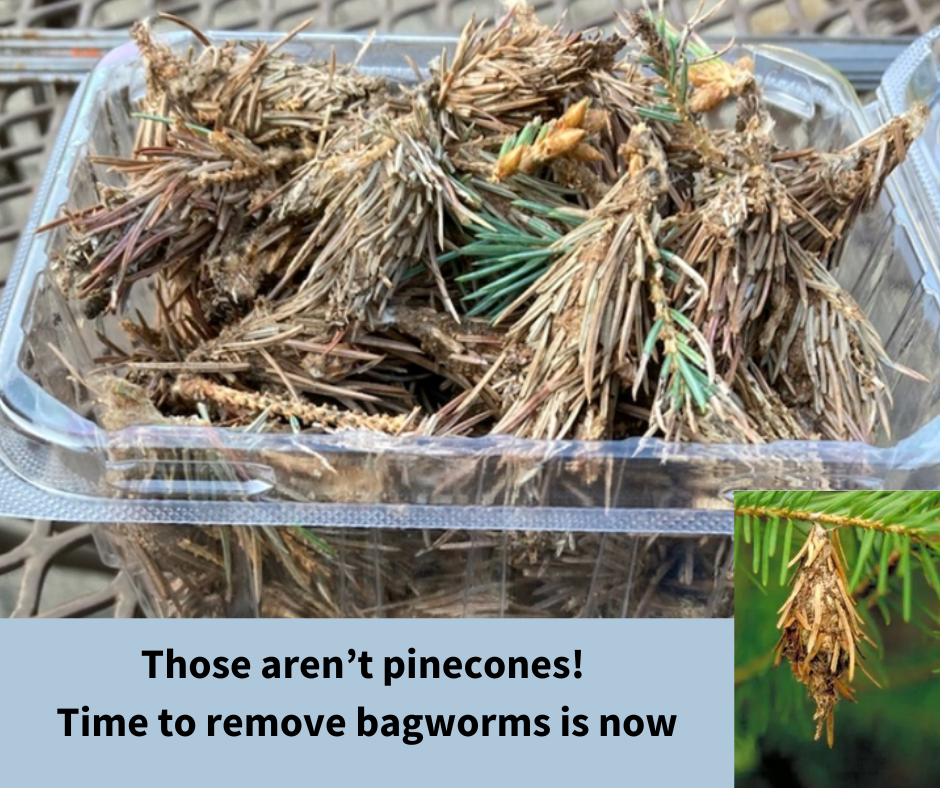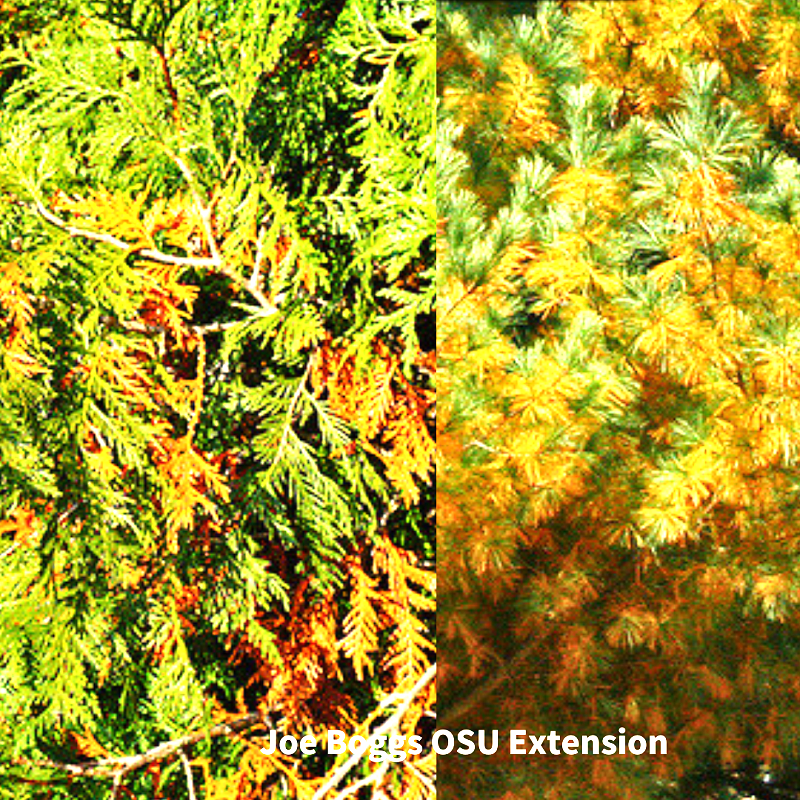Late Fall Evergreens look like Charlie Brown’s?

Even though Christmas is right around the corner (less than two months), I have been hearing from homeowners that some of their evergreens are looking more like the sad one in the Charlie Brown Holiday Special. You know that one … every time they move it, the few needles left are falling off.
And it is true for some evergreens from different families, and it is OK — sometimes. And depending on the type of evergreen you have; it can be a regular fall phenomenon or something more serious. The first thing to remember is that evergreens are “regular” trees. Evergreens look totally different, but still are perennial woody plants with leaves; just that those leaves are needles.
The first issue to address is which evergreen is which. When people tell me their evergreens are dying, and I ask what kind, the answer is sometimes “Christmas tree.” Other times, people are surprised that evergreen isn’t just the generic name for all trees that have needles that, when healthy, stay, well, ever green.
To try to get people to understand the significance of this difference, I always say that a pine is as different from a spruce, as a goldfish is different from a golden retriever. The reason it is important to identify which evergreen you have is that each species has different habits and, more importantly, problems specific to its kind.
For example, if you have pine trees … The pines of Northern Illinois are all long-needled evergreens. And their needles are grouped into bunches, technically called vesicles. There are the soft, extra-long needled Eastern White Pine. I call them “eyelash trees,” as those long supple needles look like those long false eyelash extensions, and their needles are truly as soft as eyelashes.
A fall habit of these Eastern White Pine every few years scares the compost out of some homeowners. It is a natural occurrence called seasonal needle drop. Yes, even evergreens drop some of their older leaves (needles), and this is supposed to happen. But this year is one of those years when the needles decided to drop in unison. Worried homeowners tell me their evergreen “died overnight,” but after some further questions, it is clear it is this seasonal drop.
Seasonal needle drop in white pine appears as the interior needles turn a butter yellow and then brown, and fall. Sometimes these needles will have spots or blotches, but that is due to age (heck, I have a lot of spots I didn’t start out with, either). And remember to check if this is interior needles only. If it is at the new growing tip, there might be some pathology/disease problem.
Under the heading of, “Mother Nature knows best,” as those needles drop below the tree, leave them (or would that be leaf-them?). Evergreen needles will help to acidify our super-sweet (alkaline) soil, and that is exactly what they need.
Arbor vitae (literally, “tree of life”), the evergreen that has a needle that is less needle and more a fillagree lace shape. These usually flame tipped vertical evergreens also give their owners a fright, just about Halloween time ironically, when all of their internal needles, again, in unison, turn brown, hang on for a bit, then drop.
On the other hand, there are some not-so-innocuous browning of needles on various evergreens. These are more “ornaments” that need your attention … immediately. People will ask me what it means when they have a “pinecone” on every branch of their evergreen.
Those aren’t pinecones! Look closer. Are they long brown ovate-shaped? These are bagworms. They have been hanging there for a while but remain green and are barely detectable. These evergreen insect pests are not species-specific. You can find them on many evergreens (and some deciduous trees), particularly those trees with shorter needles/leaves.
There is a non-descript moth that you will never probably see. The females of this species, work at clipping off needles and crocheting them tightly together to make a nursery for her offspring and in this same bag, her coffin. She will lay her eggs and then die in there.
But her offspring, come next late-June, will, come out of the bag on a single thread (web) just like a Green Beret repelling down a building and literally fly without wings (called ballooning) as that single thread disconnects from the bag and blows the new bagworm to an adjacent tree to begin the cycle again.
And no, there isn’t a spray to “fix” this. These bags at this point are so tightly woven that the only way a can of pesticide would kill them is if you took the bags off the tree first and used the can of spray like a rolling pin. No, any killer treatment is relegated to that late-June time, and it is an organic control. But that is only effective when the new larvae are out.
Recently, a homeowner sent me the photo in this article and was shocked how bad the bagworm problem became before they noticed it. I instructed them to pick off all the bags, which as you can see is a herculean task at this point. But it is necessary to hand-pick the bags and tie them up in a plastic bag and dispose of them in the trash.
And as always, if you are not sure about evergreens or any plant issue, reach out to me [email protected] or call the University of Illinois Will County Extension office 815 727 9296, and we will help.

Normal Seasonal Needle Drop on (left) Arbor vitae (right) Eastern White Pine. This is a natural occurrence. Nothing is wrong. No treatment necessary.